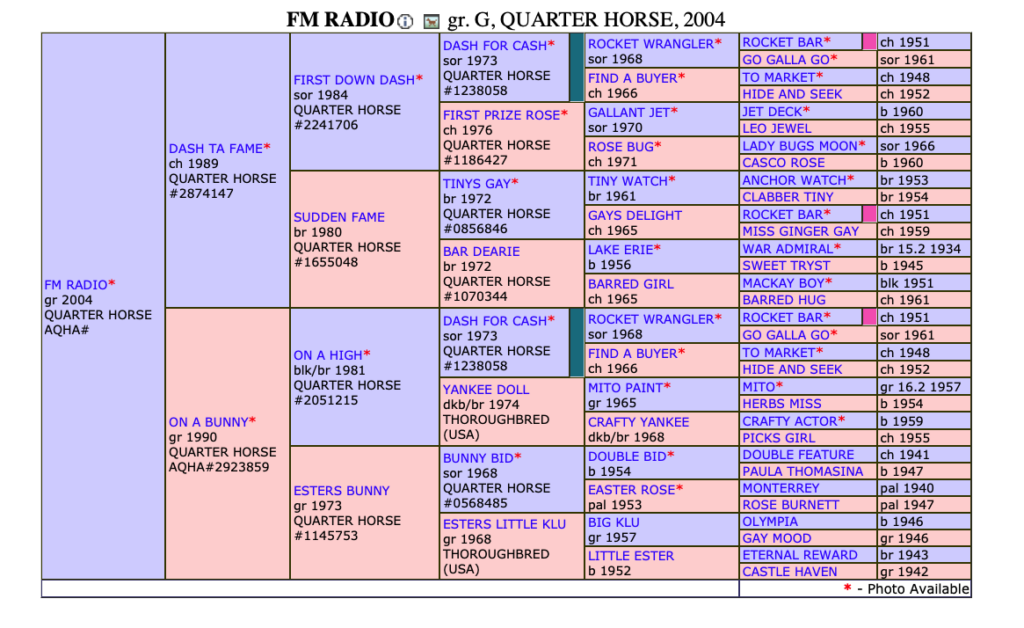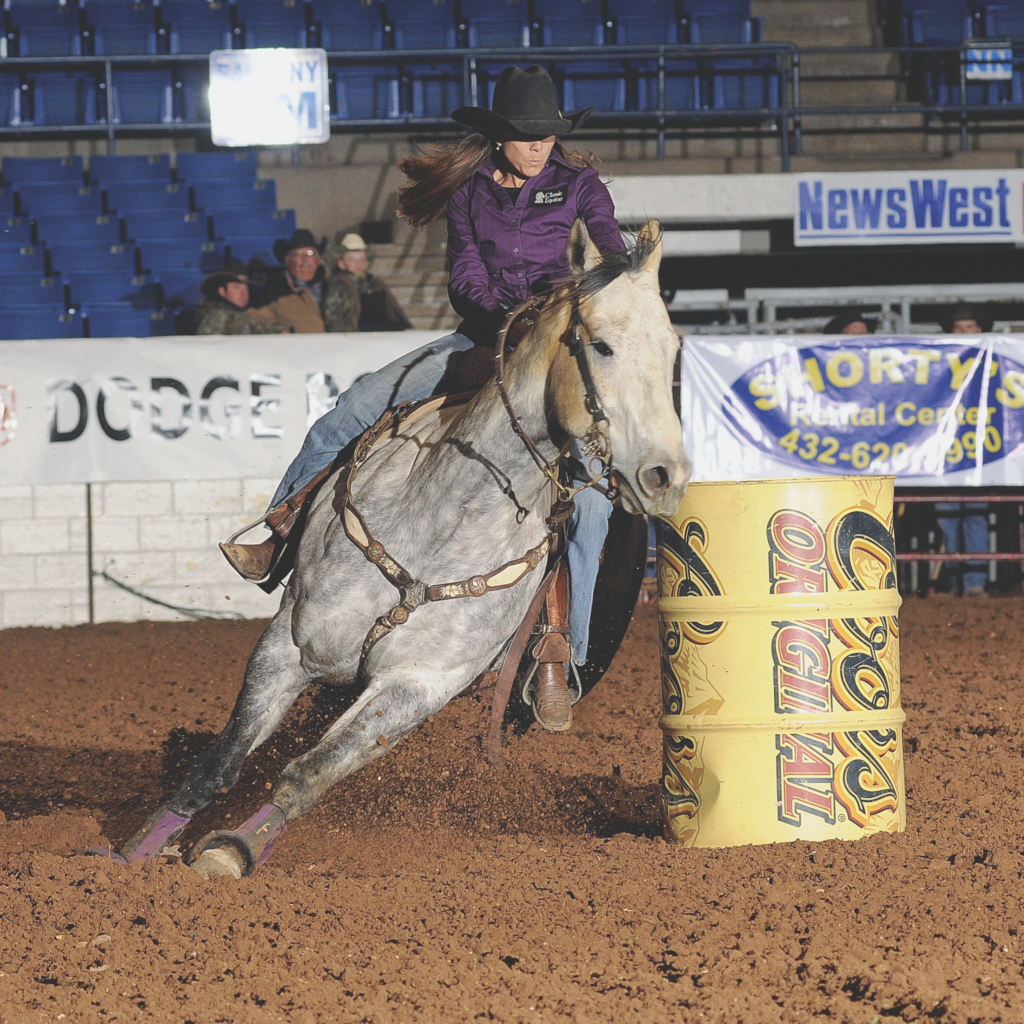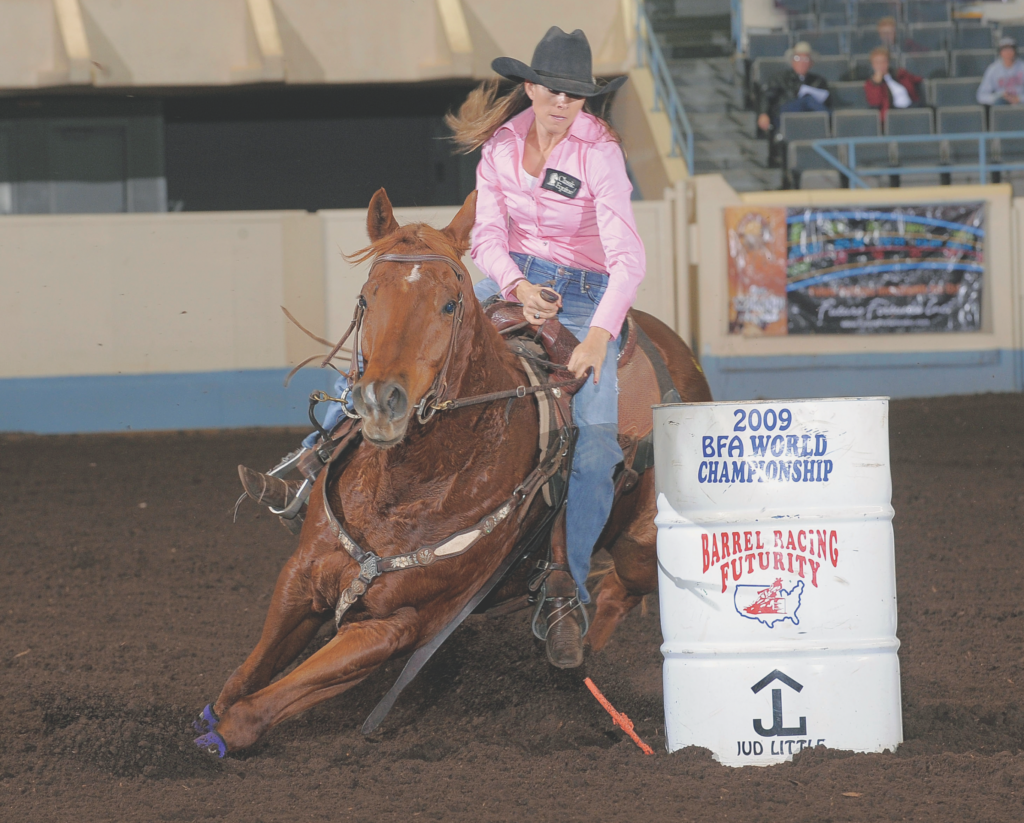The roller coaster that is FM Radio (“Denim”) was back at the top again in the winter of 2010 for Kassie Mowry of Dublin, Texas. She won the first rodeo of the year on Denim just 10 months after she nearly lost the big gray gelding to colic.
This article originally appeared in Spin To Win Rodeo in March 2010.
Her win at the PRCA rodeo in Odessa, Texas, by three-tenths of a second followed a fantastic November in which she and Denim won an AQHA world championship and also the WPRA World Finals.

Denim, now 6, had already earned some $60,000 at barrel futurities as a 4-year-old, but in March 2008, his hindgut completely twisted and the surgeons who operated told Mowry that even if he survived, he would likely perish later from sepsis caused by the dying gut.
Following surgery, he foundered so badly that fluid oozed from his feet, and he continued colicking regularly. But with the help of extremely skilled veterinarians and a hyperbaric oxygen chamber, he overcame laminitis, ulcers and other complications to finally go back to winning.
“I almost lost him,” said Mowry, who bought the special horse from Randy and Sue Schuchard. “I was kind of planning on losing him so when I started riding him again, I tried not to let myself get too attached for a while.”
It’s hard not to be attached, considering the horse’s talent. By leading barrel horse sire Dash Ta Fame and out of the On A High mare On A Bunny, Denim is the stuff of which dreams are made, and he’s been with Mowry his entire competitive career.
She also trained her other rodeo mount, Miss JB 055 (“Peaches”), a talented athlete by Fire Water Flit out of Juana Dinero (Dash For Cash x Lassie Jane). The 5-year-old sorrel mare, owned by JB Quarter Horses of Refugio, Texas, was one of nine horses Mowry trained that earned more than a quarter of a million dollars in 2008, making Mowry the winningest barrel horse trainer in the nation that year.
Raised in California and Utah, Mowry didn’t learn to run barrels until high school, although she had eons of experience in dressage and eventing. In just over 10 years of competing on the cloverleaf, she’s racked up national championships in high school and college; world championships in both the American Quarter Horse Association and Barrel Futurities of America; and an NFR qualification in 2005 when she was training for barrel horse breeder Jud Little.

In 2006, Mowry went into business for herself west of Stephenville, Texas, and looks to have solidified her spot as one of the most successful trainers in the industry. It’s been nearly five years since she effectively juggled professional rodeo with training colts, and rodeo fans were surely happy to see her back at it this winter. Still, Mowry is taking her time.
Her sole NFR qualification came aboard two 4-year-olds and a 5-year-old, which she felt were too young for the bright lights of Las Vegas. This time, she prefers to wait until her young superstar is more seasoned.
“I want to win enough to get into the big winter rodeos next year when Denim is a year older,” she says. “This year, I’d like to maybe make the Texas Circuit Finals.”
One thing is sure; Mowry is tough to beat whether it’s on her most recent 3-year-old or on the horse that’s lucky to be alive.
Winning the WPRA World Finals on Denim

This was the short round in Tulsa, and I wanted to be sure not to hit a barrel. This bit has a lot of lift and helps keep a lot of arc to my horse’s body so he stays bendy and really coming around, rather than sticking a leg and coming back hard.
I wanted a mouthpiece that was between a three-piece with a dogbone and a chain in severity. This is a mule bit with the teeth grinded off. I used this bit for about half the season and used the bit you see in the other picture for the other half.
My upper body is straight up in this picture, so that I could help Denim stand up in the turn and stay on his feet, because the ground wasn’t holding very well. I’m looking down at the next place that I want his front feet to go, and I’m going to lightly guide him around the backside of the turn.
Winning the Average at Odessa on Denim

This picture was snapped a tad later than the one in Tulsa, and Denim has just started to really follow his nose around. Again, I’m looking where I want the front feet to go. If I’m on a horse that wants to start his turn too soon, I will look through the ears at the wall to get another stride, but generally I look for each stride as he moves around the barrel.
This is a two-piece snaffle bit by Classic, and I’m using aluminum stirrups because they’re lighter and move with my feet better.
You can tell that my body weight is shifted to the outside, which I think helps keep the horse’s body coming through the turn. When a person leans to the inside, a horse can drop its shoulder. And when a horse really lays down to turn, I feel that my weight being to the outside offers some balance that can help keep him from slipping.
Winning fourth at the BFA World Championship Futurity on Peaches

You can see from this photo that Peaches’ (Miss JB 055) style is the opposite of Denim’s. She stays very straight from her shoulders to her hips and even sometimes has her head tipped to the outside in a turn. I tried to change that, but it just slowed her down.
So we met in the middle; she gets to be stiff as long as she maintains forward motion. My hand is lower on Peaches because she hits a point where she needs to drop her shoulder to do her rollback move on the backside. At this point, my knee is past the barrel so I’m asking her to start her move.
I generally drive her further into the turn so her hip has more room to clear the barrel when she makes her rollback. And I sit really deep to encourage my horse’s hind end to keep moving underneath it. I feel like I have more horse doing that, and it seems to help in poor ground. SWR





